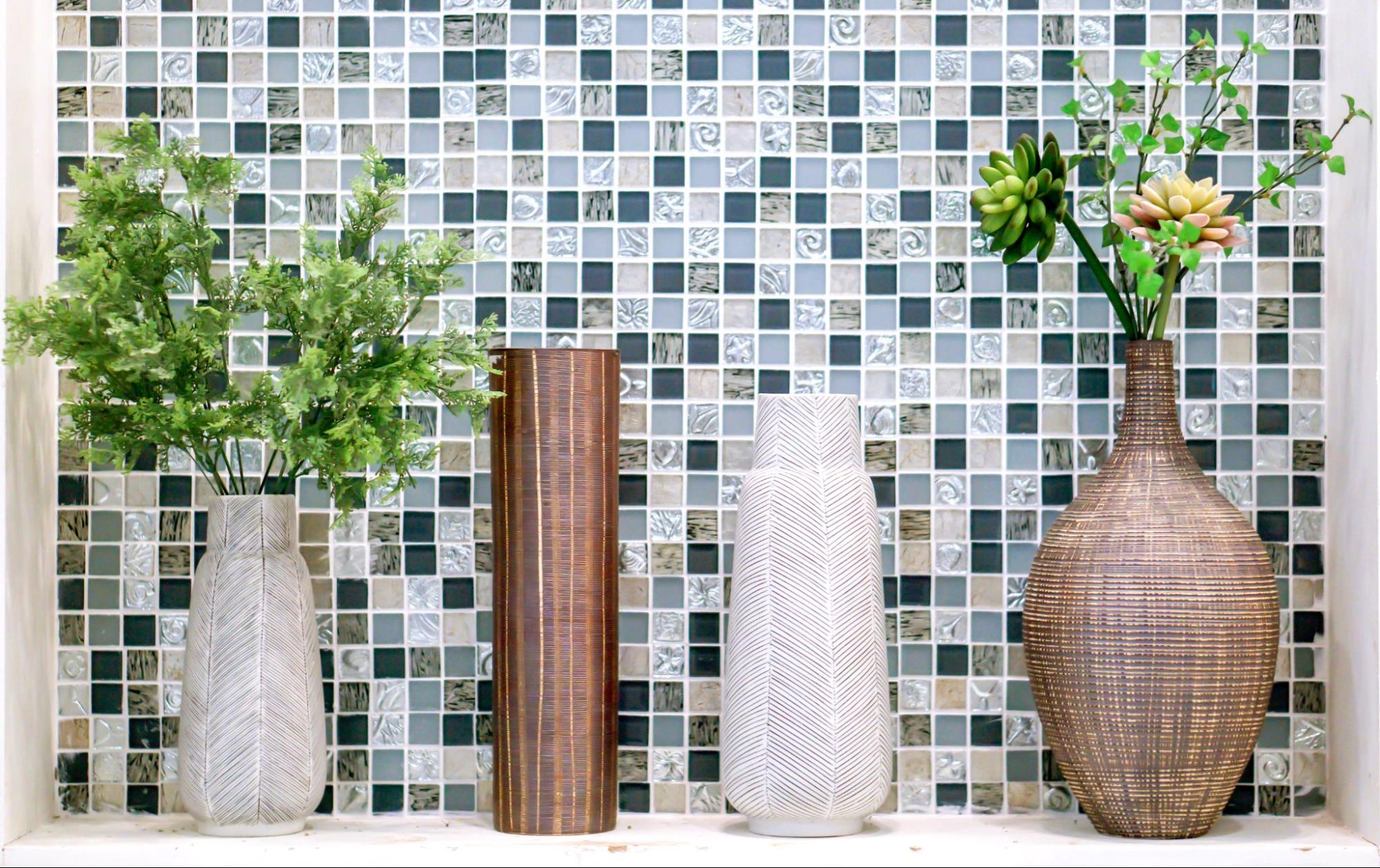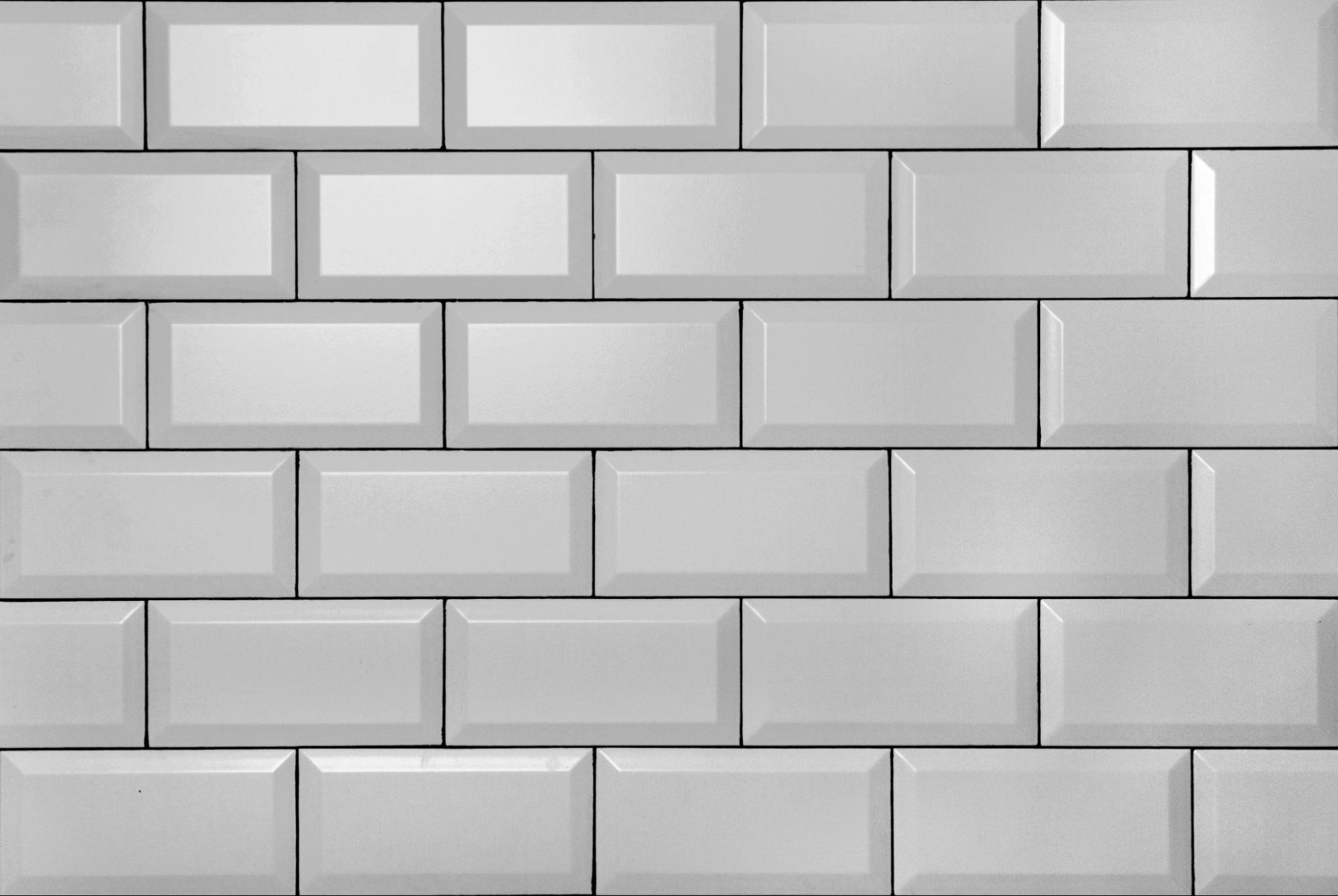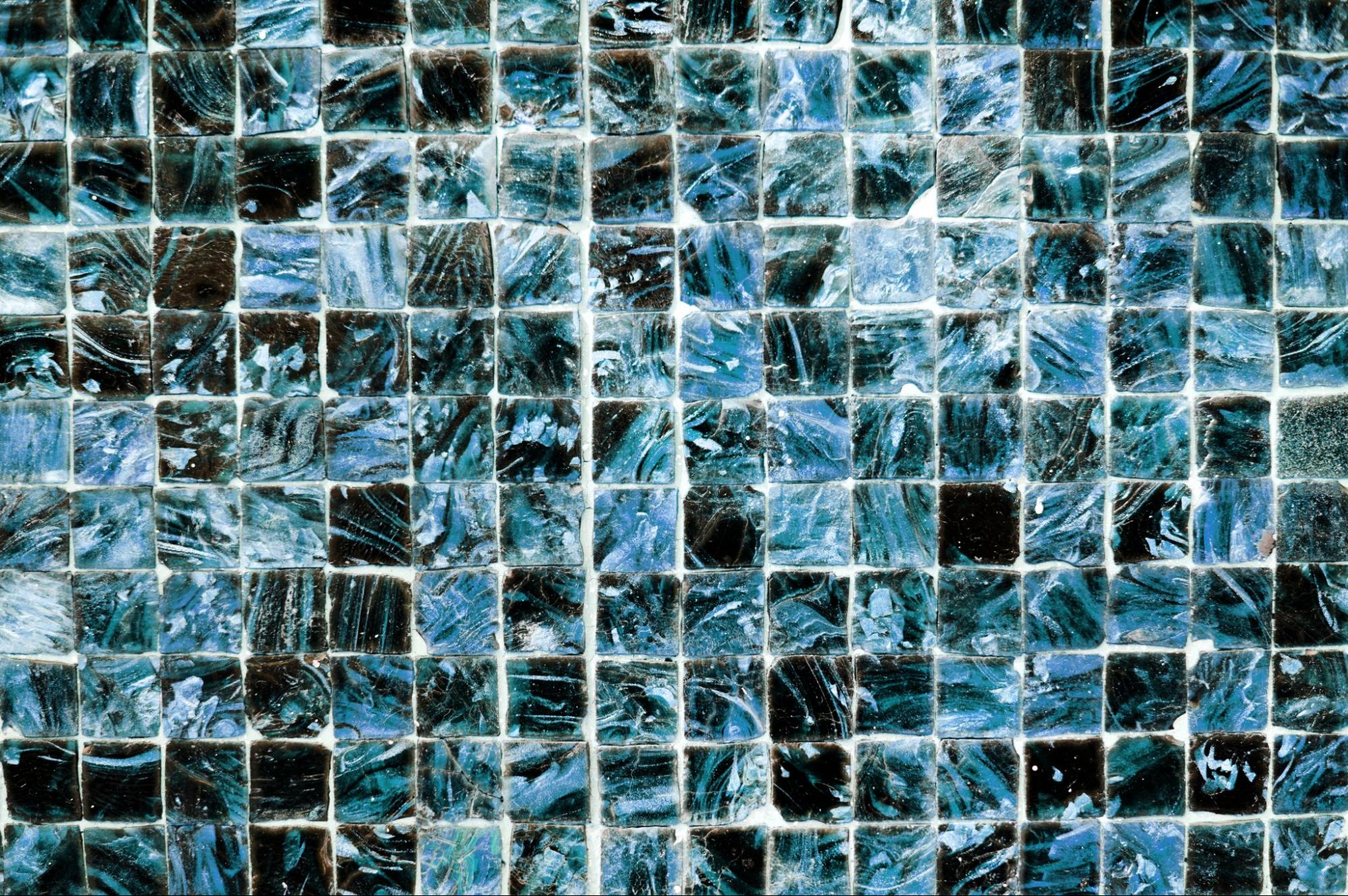
4.7
607 Reviews
Flooring Arizona since 1945!
4.7/5

600+ Reviews

Professional Installation

Educated Consultants

AZ's Largest Flooring Retailer

4.7
607 Reviews

Your bathroom backsplash does more than shield walls from water splashes—it’s a style statement. Whether you want budget-friendly basics or artisanal drama, these tile design ideas will take your bathroom from meh to masterpiece.
Subway tile earns its classic status because it’s endlessly adaptable and budget-friendly, yet always crisp. Run 3"×6" rectangles in a simple stacked pattern for a clean, modern backdrop, or rotate them into a herringbone or running‑bond layout to add subtle movement.
Color shifts the mood instantly: bright white feels spa‑like, while soft greens and blues introduce calm, and inky hues create drama behind brass or matte‑black fixtures.
Grout is your secret styling tool. Choose dark grout to outline each tile and amplify the pattern, or match grout to the tile for a seamless field that lets mirrors and lighting take center stage. Finish edges with trim or a metal schluter for a polished, water‑tight termination at mirrors, medicine cabinets, and drywall returns.

If you love the organic veining of marble but want everyday durability, porcelain that mimics stone is a smart pick. Modern ink‑jet printing and low‑variation formats reproduce marble, limestone, and travertine patterns with remarkable realism—without the porosity or maintenance concerns.
Large formats (e.g., 12"×24" or 24"×48") reduce grout lines and visually enlarge compact bathrooms, while matte surfaces hide water spots and fingerprints better than high gloss. Because porcelain is dense and non‑absorptive, it shrugs off splashes at the vanity and toothpaste mishaps, and routine cleaning is as simple as a neutral pH cleanser and a microfiber wipe‑down.
For a designer finish, carry the same tile into a shower niche or tub apron to tie the room together.

Natural stone brings depth and nuance you can’t fake—each piece has unique veining, fossils, or crystalline sparkle that turns a backsplash into art. A single stone slab behind a vanity minimizes grout and creates a luxe, hotel‑bath moment; mosaics in marble, travertine, or slate add texture and hand‑crafted character.
Stone does ask for a little care: seal on install and re‑seal as recommended to resist cosmetics, soap, and hard‑water etching, and stick to stone‑safe cleaners.
Pair warm‑toned stones with brushed brass for a cozy, traditional vibe, or choose cool, gray marbles with polished chrome for a modern classic. Keep a few spare tiles from your lot—natural variation makes perfect future touch‑ups easier.

Glass mosaics bounce light around the room, making small bathrooms feel bigger and brighter with very little effort. Use a single band above the vanity to create a jewel‑box accent, or clad the entire sink wall for a spa‑like shimmer that pairs beautifully with simple fixtures.
Because glass is translucent, substrate prep matters—ask your installer to skim‑coat for a perfectly smooth surface and use white thinset to keep colors true. Many sheets arrive on mesh backing, which speeds installation and allows curves around mirrors or sconces.
Maintenance is minimal: a soft cloth and mild cleaner will keep the surface streak‑free, and epoxy grout can further reduce staining in splash zones.

If you want personality, lean into shape and geometry. Penny rounds, fish scale (mermaid), arabesque, and hex tiles each tell a different design story, playful, coastal, classic, or modern, especially when you choose a contrasting grout to trace the outlines.
Keep the palette tight (one or two colors) to avoid visual clutter, or choose a single hue in multiple shapes for a layered yet calm composition. Pattern can also be controlled by layout: a simple field tile installed in a chevron, herringbone, basketweave, or vertical stack instantly feels custom. To balance busy patterns, pair them with quiet countertops and streamlined mirrors so the backsplash remains the star without overwhelming the space.

Taking the backsplash from countertop to ceiling transforms the vanity wall into a true focal point. The extended height draws the eye upward, making low or narrow rooms feel taller and more architectural. This approach works especially well behind a floating mirror or a pair of sconces, where uninterrupted tile becomes the backdrop for warm, flattering light.
For cohesion, repeat the tile or a coordinating accent in the shower niche, tub surround, or flooring inlay. Plan electrical boxes and mirror mounts before tiling to avoid awkward cuts, and finish exposed edges with matching trim or metal profiles for a crisp, professional reveal.

If easy upkeep is the goal, specify finishes that hide splashes and simplify cleaning. Satin or matte glazes diffuse glare and mask water spots better than high‑polish tiles, while rectified edges allow tighter grout joints that collect less grime. Pair tiles with epoxy or stain‑resistant grout to keep the lines looking fresh, and choose silicone caulk at countertop transitions for flexible, mold‑resistant seals.
Don’t forget the finishing details: color‑matched trims or metal schluters frame the installation, protect edges from chipping, and give the backsplash a tailored look that holds up beautifully in daily use.

Is ceramic or porcelain better behind a vanity? Porcelain is denser and very durable, but both work beautifully.
Can I use floor tiles as a backsplash? Yes, just check the thickness and trim options.
What about wallpaper? Use only in powder rooms away from direct water.
How high should a backsplash be? At least 4–6 inches; full‑height to the mirror or ceiling for a modern look.
From classic subway tile to shimmering glass mosaics and stone looks, the right backsplash protects and impresses. We recommend that you pick materials that match your bathroom design and your cleaning routine. Feeling stuck? See and feel the difference in person where you can explore tile samples with a Baker Bros specialist and get expert guidance on pairing style with function. Visit one of our showrooms to create the perfect backsplash for your bathroom.
Stay informed, get inspired, and be the first to know about promotions – subscribe now!
By subscribing, you agree to our Privacy Policy.